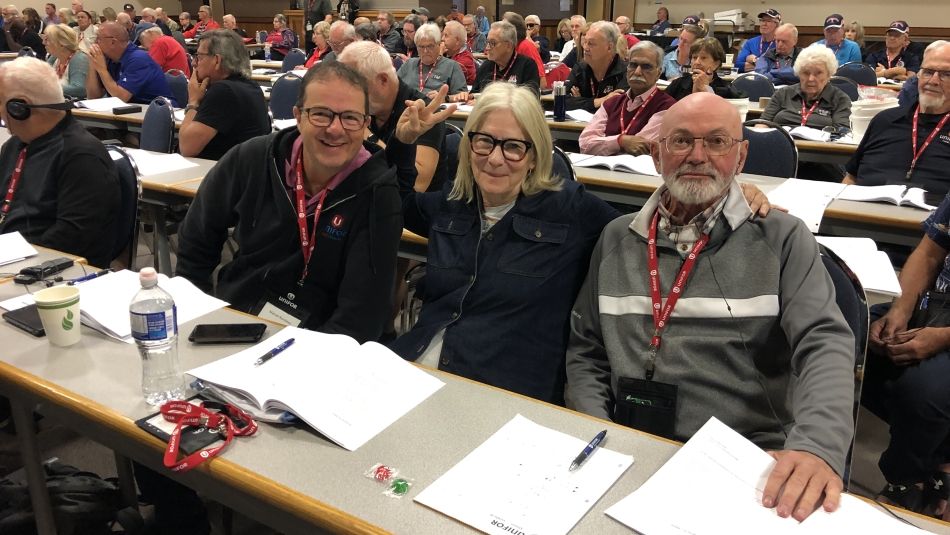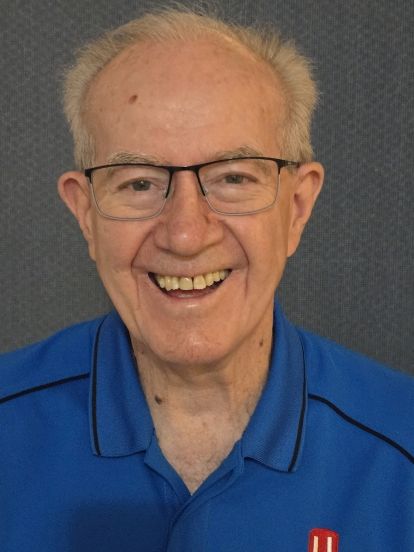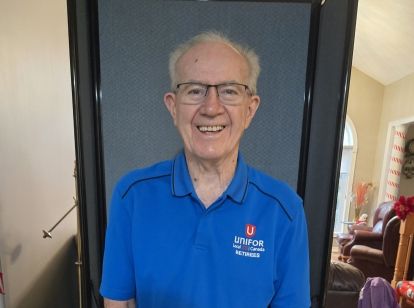
Share
Unifor Local 222’s Retired Workers Chapter turns 75 next year, but chapter chairperson Lyle Hargrove is already setting his future sights set on the milestone 100th anniversary.
“Just because you quit working doesn't mean you quit having fun,” said Hargrove. “The stigma is that once you finish your working career, then that's the end of it. But by having a retired workers chapter, the activism continues, the community involvement continues, and then, the breadth of knowledge to the union continues.”
Since the Oshawa, Ont. chapter’s inception in 1950, there have been lots of ups and downs with the labour movement, but also in keeping retired workers engaged with their union. But Hargrove, 79, said it’s been worth the work.
The chapter, about 14,000 strong, holds regular events for retirees including dances during the winter, yoga, euchre, Tai Chi, line dancing and pool tournaments. Chapter members also support the ongoing work of the union and are active in campaigns and support for striking members. Having a retirees’ chapter is very important, explained Hargrove.
“It gets people together so that they're not staying home by themselves,” he said. “They love our meetings, but then love to get together before and after and talk with each other and have some laughs and old times. It's very important for people to interact with each other and remain engaged in workers’ rights and political and social change.”
Sandy McFarlane, the Retired Workers Chapter chairperson at the Toronto-based Unifor Local 2002 – but which has members from across Canada – shares the belief that retirees joining a chapter provides them with community and an opportunity to continue their activism.
“We've got folks in our union now who've been more than 17 years without any changes to their pension,” she explained. “It's an opportunity for community activism. I can't increase my pension on my own, but there’s power in numbers and it means maybe somebody will listen.”
McFarlane, a 47-year veteran in the aviation sector, said political activism was her cornerstone for getting involved in the union in 1976. She retired from Air Canada in Nov. 2020. McFarlane, 68, is based in Calgary.
“I marched and fought for abortion rights. I marched and fought for a lot of women's rights, and now, they're being clawed back,” she said.
“My grandmother fought to be able to put her name on a credit card. And I take that for granted. My kids take it for granted. There is the sense that by staying involved in the union, I'm helping to keep rights for the next generation.”
McFarlane said she sees younger workers who are members in the aviation industry struggle with key issues such as successor rights and contract flipping. She believes there is a wealth of experience and knowledge between retirees and young workers and the two could be an unstoppable force.
“Youngsters are taught that you need multiple career paths, because technology and careers change,” she said. “We've got AI coming in. Who knows what that's going to do?”
Unifor National President Lana Payne said retired workers are an important part of the union.
“They are a wealth of knowledge and experience,” she said. “We feel gratitude for their continued activism and solidarity and their enthusiasm for being involved in our fights and rallies. We appreciate their unique voices and sage wisdom.”
McFarlane added that retirees can provide the history, experience and resources in terms of time and energy to help, particularly guiding younger workers with pensions and cost-of-living increases protections in collective agreements.
“In our local, there are many units who haven't even yet negotiated a pension,” she said.
“I think history is important and we should present what unions have done and fought for.”
At Local 222, most of the members in the Local 222 chapter are over 70, and Hargrove worries that younger retirees may not be aware of these chapters or not have an interest in them as older retirees die, contributing to shrinking numbers.
“That’s always a plan to try to get them even before they retire. Our doors are open to welcome new members,” he said.
Retired Workers chapters give back to communities in exponential ways, said Hargrove.
Through volunteer dues of $2 a month allows Local 222’s Retired Workers Chapter to donate roughly $80,000 to $90,000 annually to various charities including food banks and Boys and Girls’ Clubs and other causes for those in need.
“Unions are a big benefit to a place like Oshawa, or where they have a lot of members, and a lot of [auto] plants. The young guys are reaching out, as well as retirees, to help whoever needs it in the community,” he said.
“We know the union changes, but the retirees are in the background, and when they're called on, they're there, whether it's on picket lines, they're doing a function at the hall where they're short of volunteers, things like that. They call me and I just send out an email,
‘Get your ass down to the union hall!’” he laughs.
McFarlane shares a similar sentiment.
“I just spent six weeks in Saskatchewan with the recent provincial election,” she said. “We did take a good number of people and paid their wages but getting them out of the workplace was harder than paying them. With retirees, we didn't have that difficulty. We just needed expenses paid. And you know, a pat on the back.”
Unifor Local 222 President Jeff Gray said the local’s retirees chapter sets a go-forward example of the solidarity it takes to achieve workers’ rights and collective bargaining gains.
“The impact of their time in the workforce has provided many benefits that active members enjoy to this day,” said Gray. “We remain grateful and are blessed for our retirees.”
To expand the network of retirees’ chapters across Canada, Hargrove said he appreciates the help of Unifor Retired Workers Director Barb Dolan and Local 222 Retired Workers Chapter member Les MacDonald.
The major challenge is staying in contact, said McFarlane.
Employers don’t keep information on retirees if they don’t have a pension, and even then, it could be sparse or not up-to-date. When chapters acquire a membership list, then it’s about connecting with them at coffee shops, bowling, ball and golf tournaments. And to keep people interested and engages, educational presentations, conventions and conferences are key.
“You bring a guest speaker, and it sparks a light, and somebody picks it up,” she said.
Local 2002 President Tammy Moore said a retired workers chapter “ensures that the experience and expertise of our retirees continue to strengthen our local, while also providing ongoing support, advocacy for retiree benefits, and a voice in union decisions.”
Hargrove recommends seniors make sure they volunteer, whether it be in a hospital or at a service club. He also invites retirees to get involved at the Unifor Retired Workers Council that takes place Labour Day weekend and the days after in Port Elgin, Ont. to discuss important issues.
“A lot of people are hurting out there, and we know it. And even some of our retirees now, since they took our cost of living away, or they retired a long time ago, like 20 years they're having to move in with their kids and do other things to survive now because their paychecks not growing,” he said.
For Local 222, Hargrove said he’s still planning the big party for the 75th anniversary of the Retired Workers Chapter, but beyond that, he would like to achieve enticing younger people to join and continue to feel valued and appreciated by Unifor as they volunteer their time, energy, and expertise.
“I hope our union, from the National down, will always call on the retirees as much as they can,” he said.
“Because retirees want to do it, but they want to feel like they the national union wants them to do it as well.”





